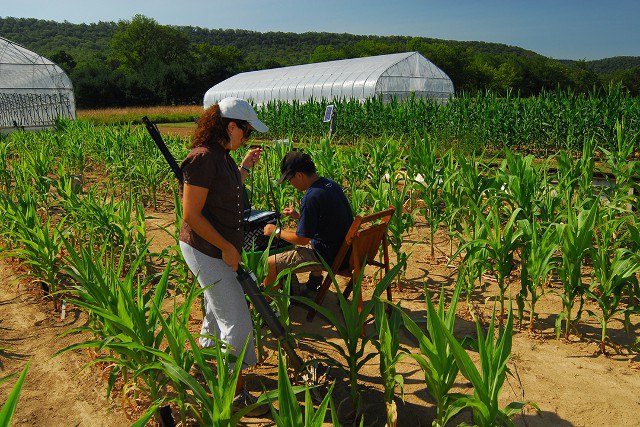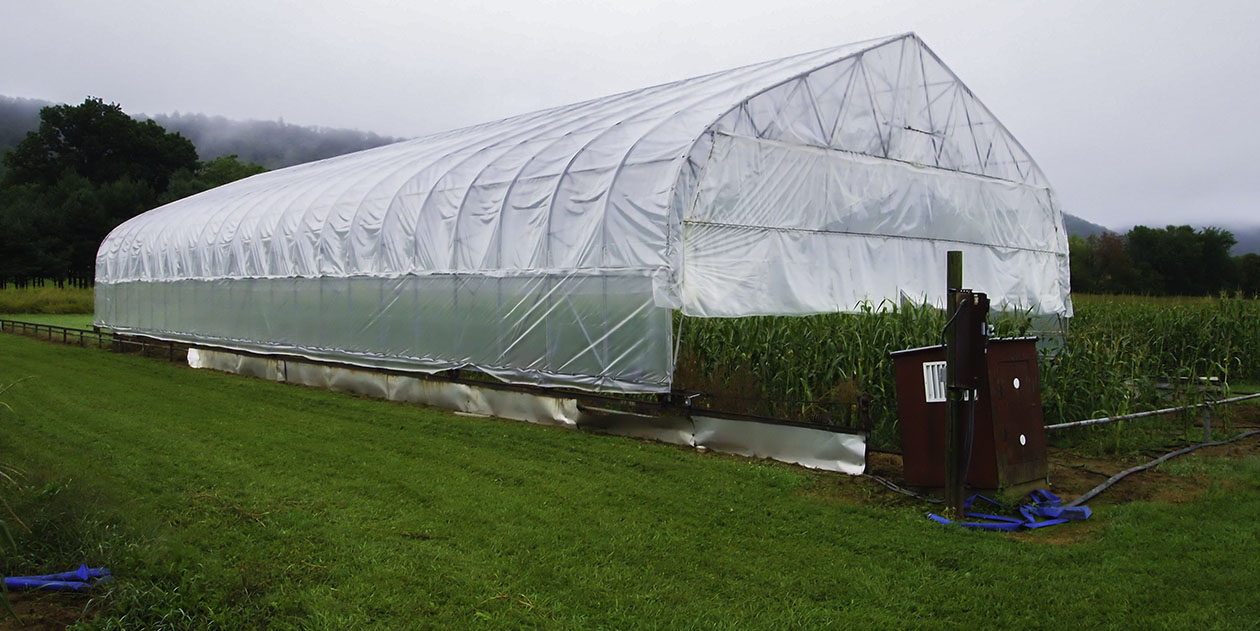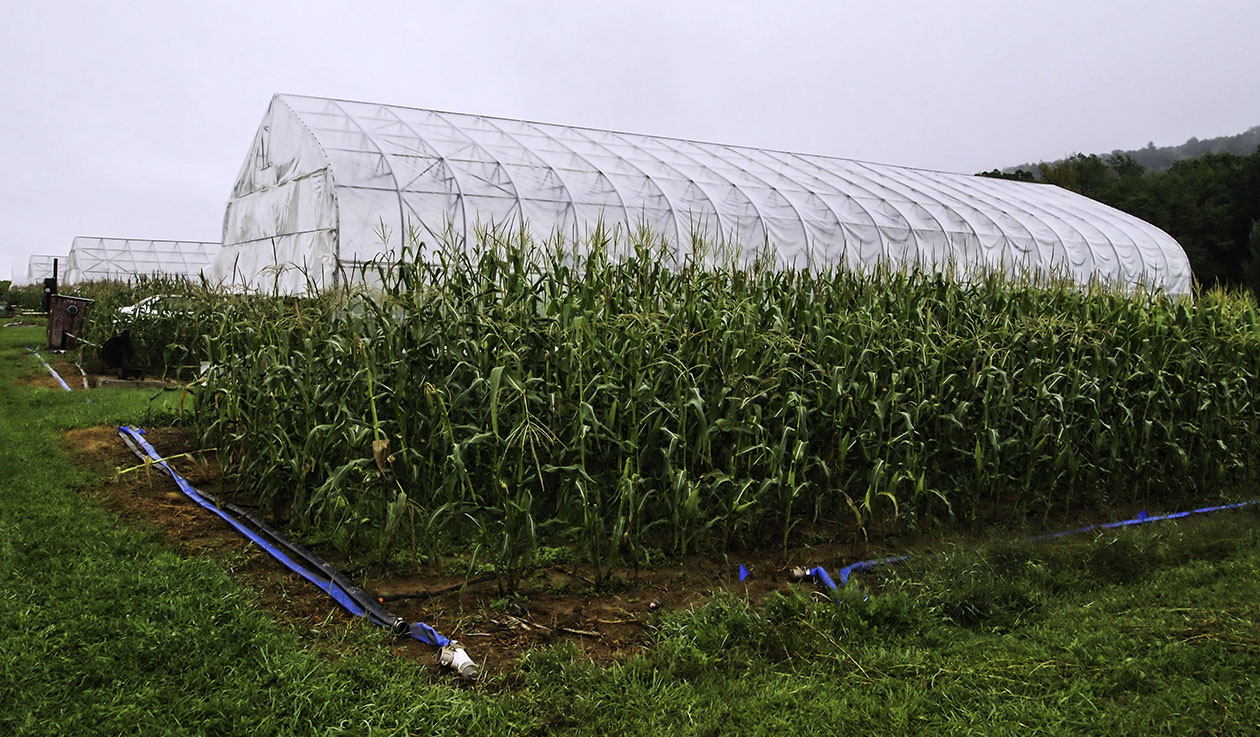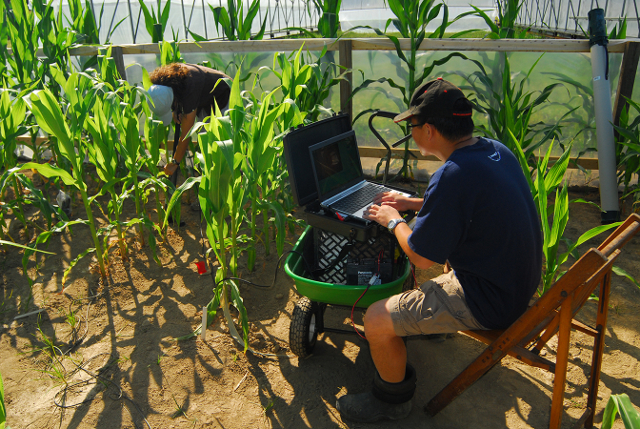We have access to five moveable greenhouses, or rainout shelters, at Rock Springs to research the relationships of root traits to drought tolerance in maize and common bean.
The facility has 2 shelters which are 28' wide x 85' long and 2 slightly larger units that are 30' wide x 90' long. At the same location, the lab has its own 144' long x 30' wide rainout shelter designed and built by the lab manager, Bob Snyder, in 2011.
The rainout shelters are very useful for creating drought by excluding natural precipitation from the plots. The rainout shelters incorporate sensitive rain sensors that activate electric motors to move the shelters along tracks pulled by a chain drive to cover the crop during a rain event. Once the rain has stopped, the shelters are then automatically moved off the crop. Each rainout shelter has a companion control plot for the well-watered treatment. We incorporate drip irrigation to selectively water the control and drought plots and apply pesticides or nutrients if needed.
For more information on plot sizes within the shelter, see this document.
Rainout shelter planted with maize for drought experiments. Rainout shelter covers field during rain events.
Control plot adjacent to rainout shelter planted with maize for drought experiments.
Minirhizotrons can be installed in the rainout shelters for monitoring root system development over time.
PDF document, 523.4 KB





